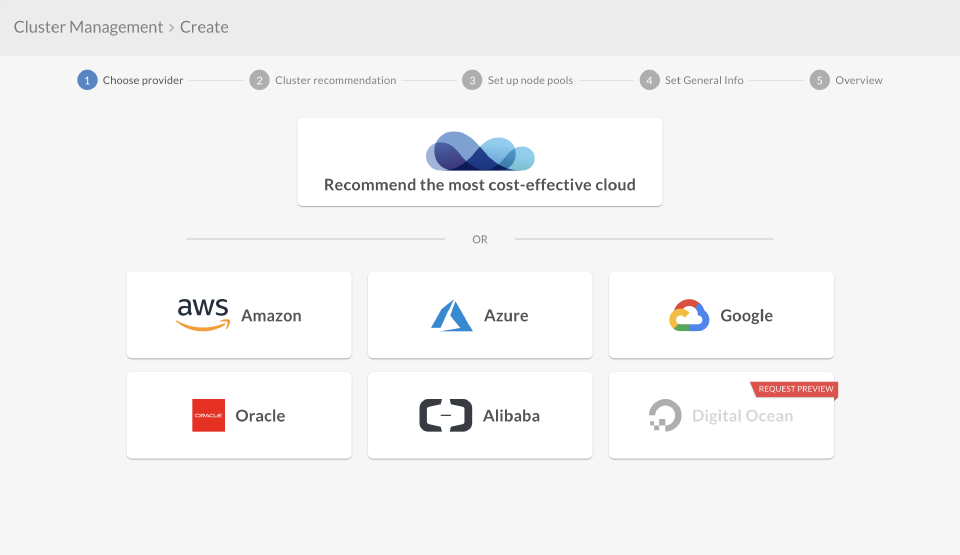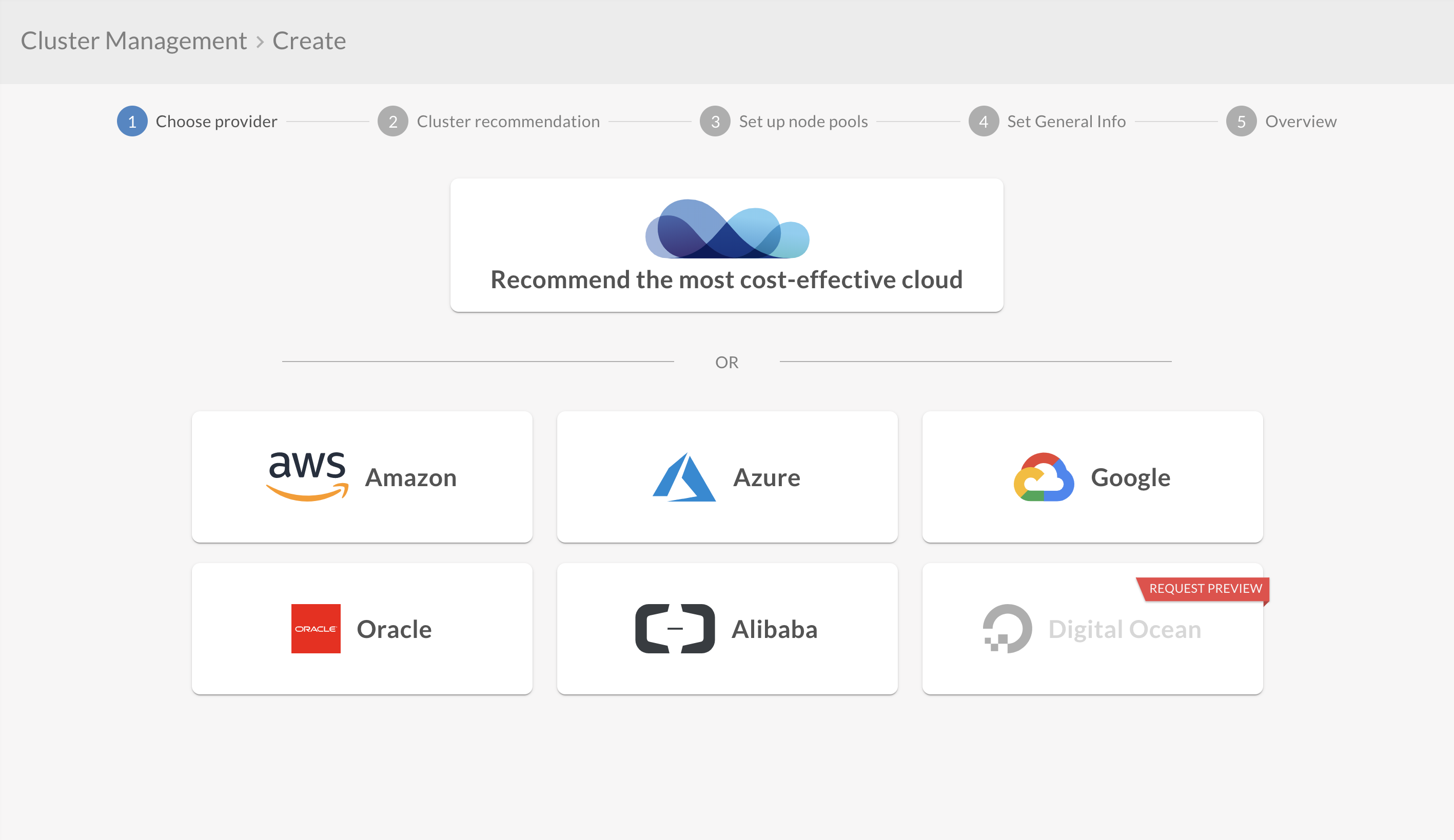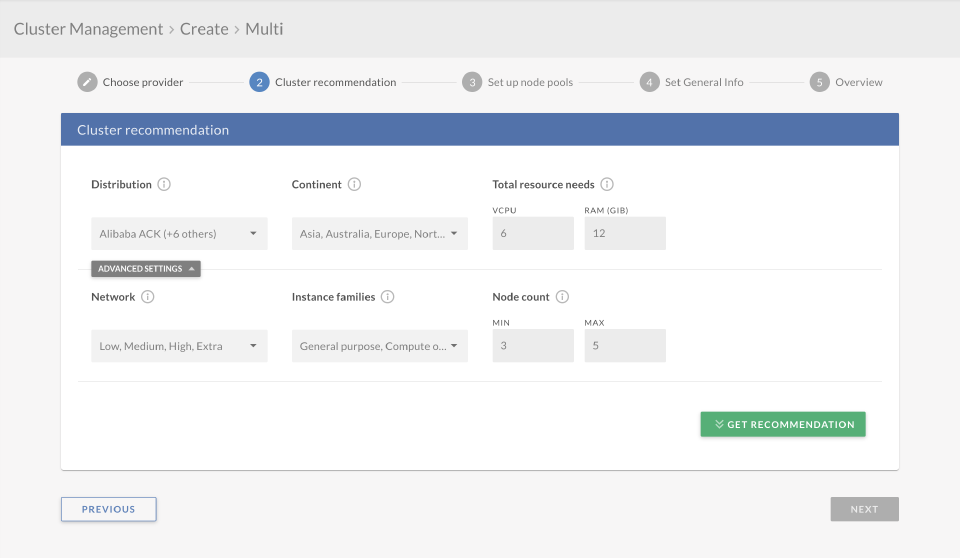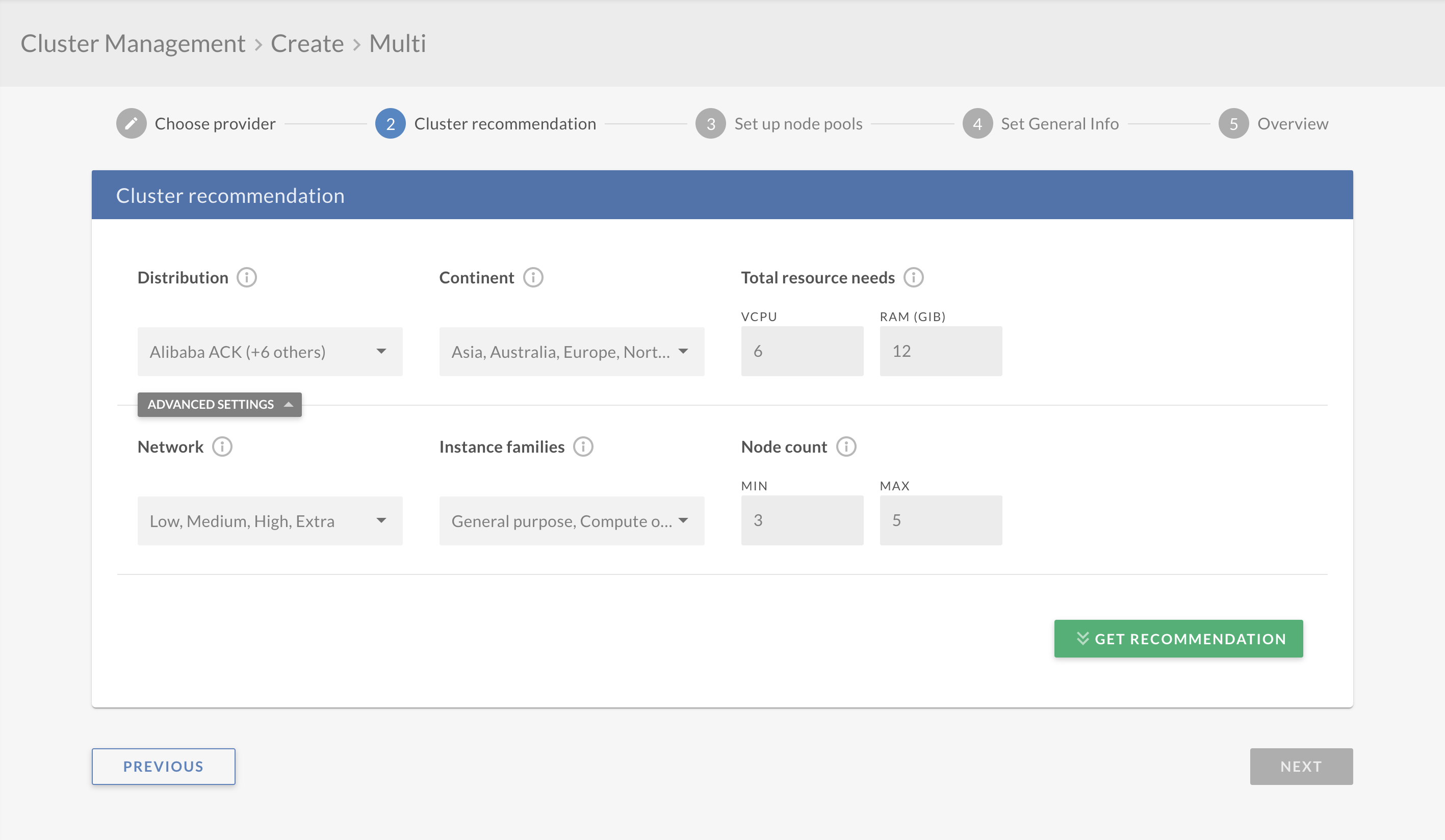When we want to create a cluster, the first question arises is: Which cloud and distribution should I use?.
And after we managed to make this decision than how many and
what kind of instances our cluster should have to run the application(s) without problems.
Banzai Cloud Telescopes is trying to answer these questions.
This is a cluster recommender application: its main purpose is to recommend cluster instance types and full cluster layouts. The application operates on cloud provider product information retrieved from the Cloudinfo application. It exposes a rest API for accepting recommendation requests.
How to choose cloud and/or distribution 🔗︎
Currently Banzai Cloud Pipeline supports several clouds and distributions. On the web user interface, you have two choices in the beginning of the cluster creation flow:
- Choose the preferred cloud provider to compare different offers (distributions)
- Compare the most cost-effective offers across all of the cloud providers
Recommendation inputs 🔗︎
The second step of our create cluster flow is to fine tune the requested resources. The following are the most important input parameters of Telescopes:
- Distribution
- Continent
- Total resource needs
- Network (advanced settings)
- Instance families (advanced settings)
- Node count (advanced settings)
Distribution 🔗︎
Banzai Cloud Pipeline supports several cloud providers and distributions:
- Amazon + Pipeline Kubernetes Engine (PKE),
- Amazon Elastic Kubernetes Service (EKS),
- Azure + Pipeline Kubernetes Engine (PKE),
- Azure Kubernetes Service (AKS),
- Google Kubernetes Engine (GKE).
If you can’t decide that’s fine: select all the distributions and the recommender will consider all of them.
Continent 🔗︎
Choose the region of your cloud provider. Consider the placement of your existing infrastructure, the latency between distant endpoints along with the differences in pricing.
- Asia
- Australia
- Europe
- North America
- South America
Total resource needs 🔗︎
We will recommend a cluster layout with worker nodes providing at least the specified number of virtual CPUs and gigabytes of memory in aggregate. Our defaults are 6 vCPU and 12 GiB of RAM.
Network 🔗︎
We will recommend a cluster layout consisting of nodes that deliver the specified level of network bandwidth. Supported network types:
- Low
- Medium
- High
- Extra
Instance families 🔗︎
Use only instances that match the specified criteria:
- General purpose
- Compute optimized
- Memory optimized
- GPU instance
- Storage optimized
Node count 🔗︎
We will recommend a cluster layout consisting of worker nodes in the specified range, 3 to 5 by default.
Result 🔗︎
The output of the recommendation will be displayed as a table, where you can easily compare the offers with different cloud/distribution combinations:
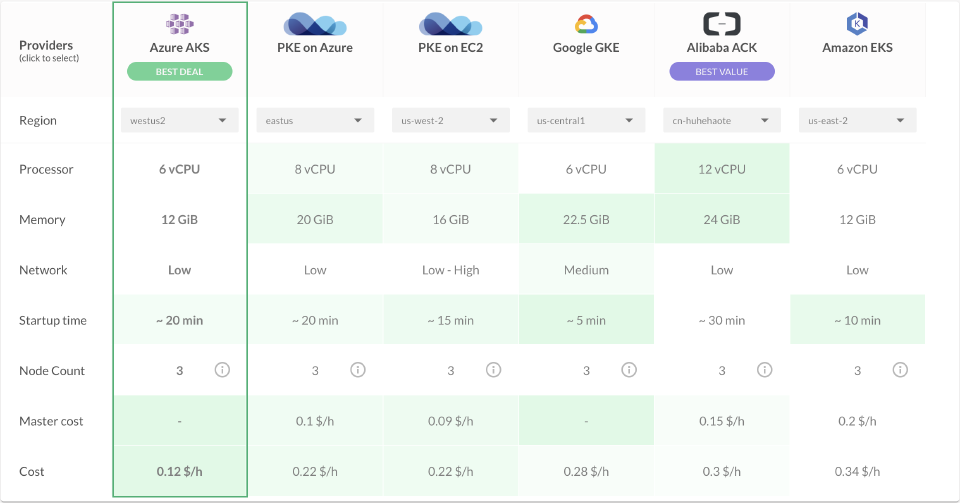

As illustrated, the Telescopes recommendation is based on optimal price and value within the specified parameters. When you accept an offer, you can fine-tune the cluster layout in the next step.
Further reading 🔗︎
If you want to use your own instance of Telescopes, check the section about services.








